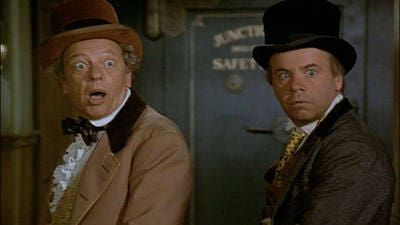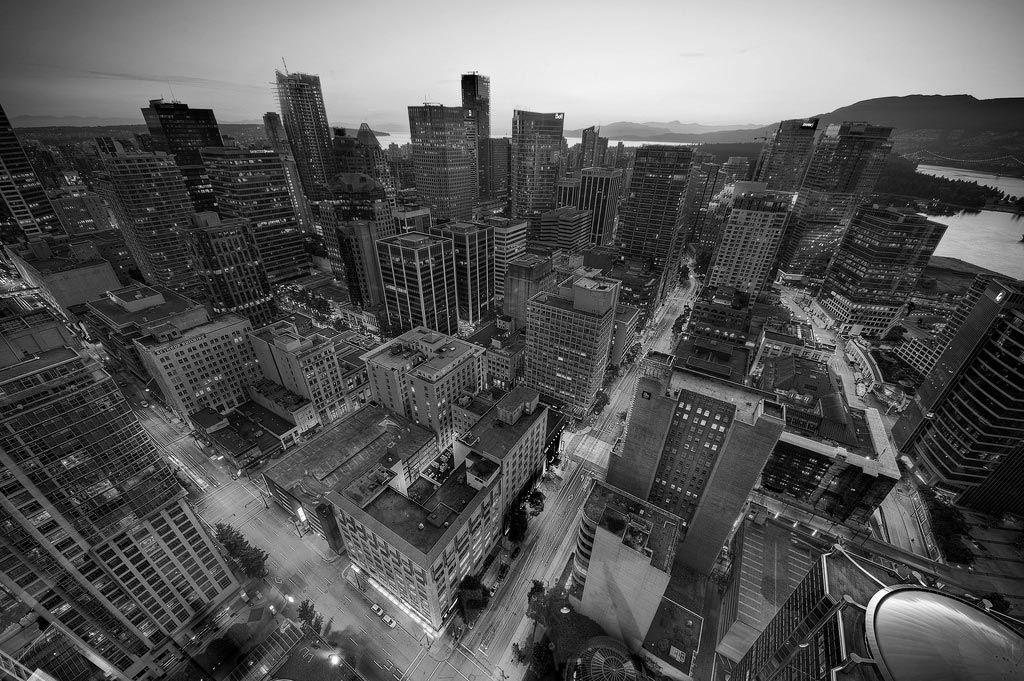There’s a lot of cultural weight behind certain sequels even if they’re lightweight. In this case, it’s not that the world was exactly crying out for one, but this is from the era where Disney was producing an awful lot of sequels, because they were in a holding pattern. After Walt died, the company took a long time to figure out exactly what they were doing. Pretty well every time they had a success, they tried to repeat it in one way or another. Often that was literal. The Love Bug was the last movie Walt himself approved, and it was a hit; three sequels followed. The Apple Dumpling Gang was a success, so The Apple Dumpling Gang Rides Again was in a way inevitable.
Of course, the last movie ended with Amos (Tim Conway) and Theodore (Don Knotts) happily settled, so we have to do something to shake that up. What has happened is that they’ve decided that they’re not going to end their lives happy on a farm and that it would be a tragedy to a pair of the greatest figures from Western history. So they’re going to go commit more crimes and be legendary outlaws. The problem of course being that they’re terrible at it. But they end up in a situation where they appear to have gotten the drop on Marshal Woolly Bill Hitchcock (Kenneth Mars).
Meanwhile, there are a series of robberies from the Army. Payroll, supplies, and so forth. Major Gaskill (Harry Morgan), who runs the fort, is afraid he’s going to lose his commission over it. All at the same time as his daughter, Millie (Elyssa Davalos), is on her way to the fort from Back East to marry Lieutenant Jim Ravencroft (Robert Pine). For reasons, she is escorted to the fort by Private Jeff Reed (Tim Matheson). They immediately dislike one another. She thinks he’s beneath her; he thinks she’s a useless snob.
This movie has basically nothing to do with the previous one. Oh, it’s got Amos and Theodore, but they could be literally any goofy Tim Conway/Don Knotts outlaws. Arguably it would make more sense that way. The pair are mostly there to wander haplessly through the plot, with things happening because of them despite their not actually causing them, but the movie has to give them more focus than they really deserve because they’re the stars and the carryover from the previous movie. There’s no plot-specific reason for them to be our focus, though, and quite a lot of reason for them to maybe not.
Honestly, the movie needs to be reframed from Millie’s point of view. Make her less helpless. Make her more interesting. Make her less a snob and more a girl who’s spent her entire life shuffled around waiting for her father to have time for her. And, sure, you need to get a couple of people inside the gang, but you can work that out. Heck, you can even have your comic relief character there, and trim the heck out of the comic relief—you definitely don’t need the Woolly Bill subplot, for example.
And then we get into the weirdest scene of the movie. Amos and Theodore are, for reasons that don’t need exploring at this juncture, hiding from Woolly Bill and from a group of outlaws headed by Jack Elam as “Big Mac.” They are in the back of a saloon, and they conveniently manage to find costumes and wigs that fit them and disguise themselves as “dance hall girls.” It seems improbable that they could fool anyone and implausible that they’ve ended up in an entire bar full of men who are into that kind of thing. And impossible that they’ve ended up in an entire bar full of men who are into Don Knotts and Tim Conway in those costumes.
This also leads to the only racist bit of the movie, unless you include that, you know, it’s your standard whitewashed Hollywood Old West. Amos has a mule, Clarice, who’s weirdly obsessed with him and follows him everywhere. At Theodore’s insistence, they trade the animal to a Native American woman for some blankets to cover their dance hall disguises. This is so they can be revealed at the relevant moment as still wearing the dresses. This makes sense on pretty much no level, really. But it does mean that the woman’s people get involved in the climactic train robbery at the end because Clarice follows Amos.
This is definitely a movie that suffers from not knowing what it’s trying to do. It’s relying on Amos and Theodore to pull you in. It’s got the love story, but none of that is set up at all. Why is Millie going to marry Ravencroft? We don’t know. Why hasn’t she been with her father this whole time and what happened to her mother? We don’t know. How did the scheme to attack the Army wagon trains start? That’s left vague, and while the novelization (I bought it at a library sale in elementary school, okay?) gives us a little more detail, only a little. The plot doesn’t fall apart as soon as you look at it, but only because it never held together in the first place.
Sometimes, movies like this are crying for a remake. That’s not the case here. Its bones aren’t good enough. It’s a weak structure. There’s no compelling characters. There’s no value to anything. There are a few minor details that could go somewhere, but it would be better to lift them out of the movie’s structure completely and put them in something else. Specifically the idea of a secret lair in a prison that started as caves discovered by the prisoners building the prison; you could definitely go places with that. This movie treats it as nothing, but it’s probably the best part.
If for some reason you like people who write more than a page about The Apple Dumpling Rides Again, consider supporting writing you’re not likely to get anywhere else by supporting my Patreon or Ko-fi!


